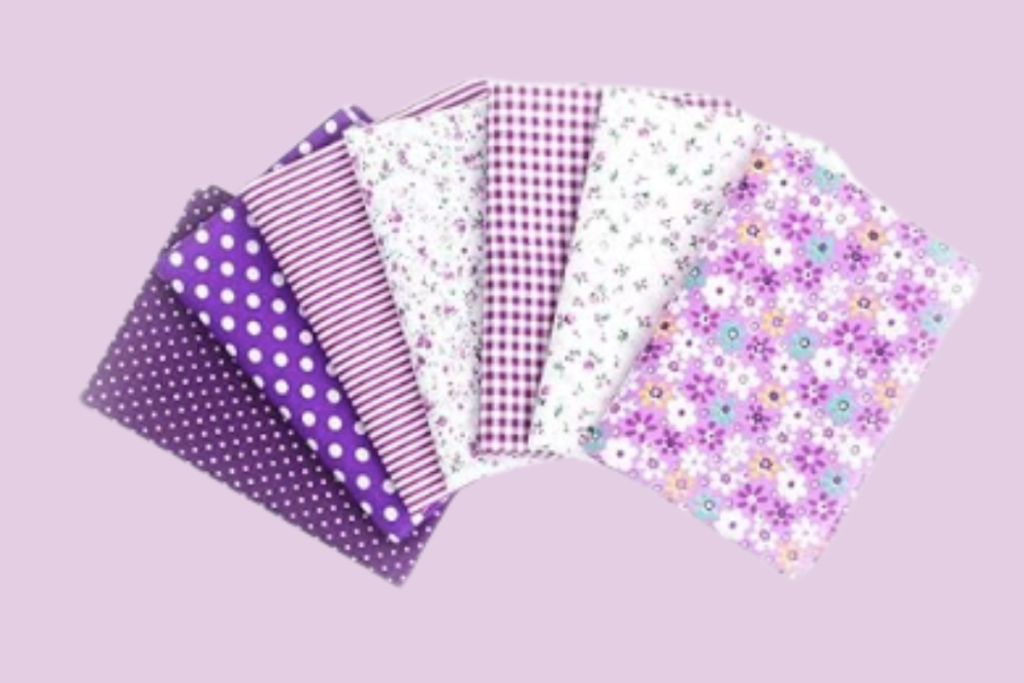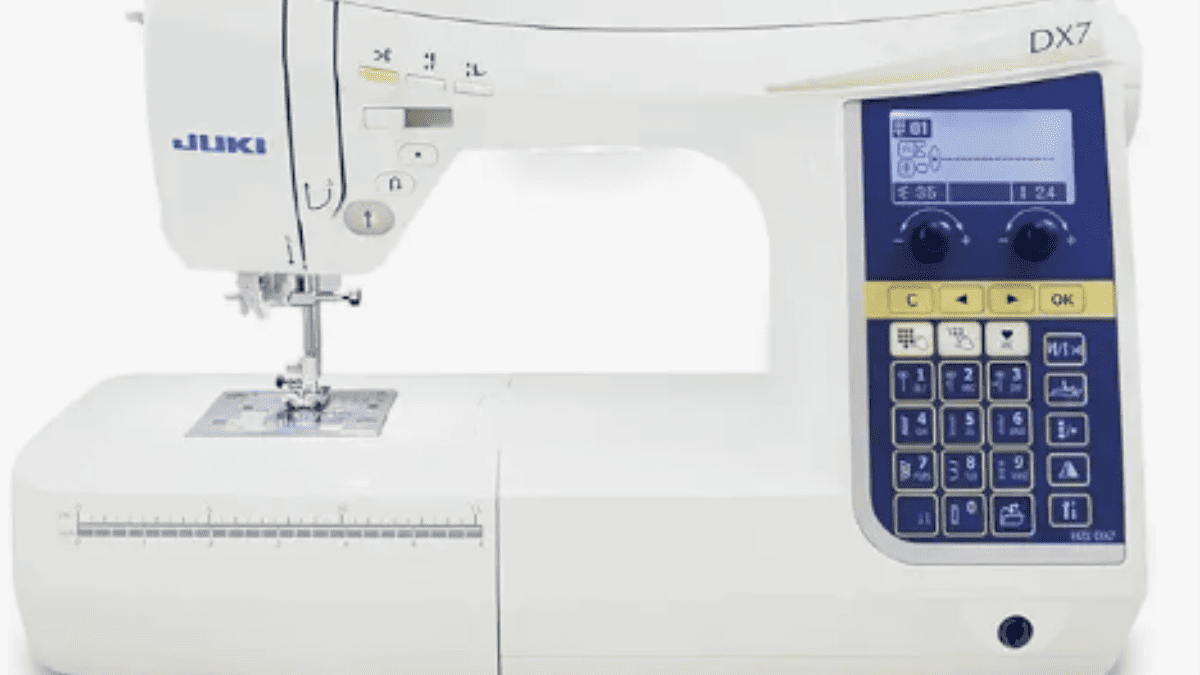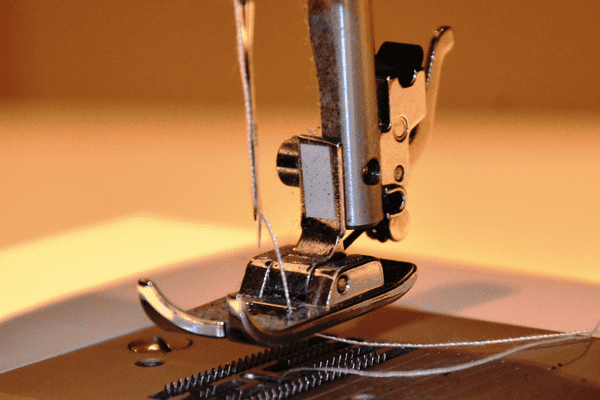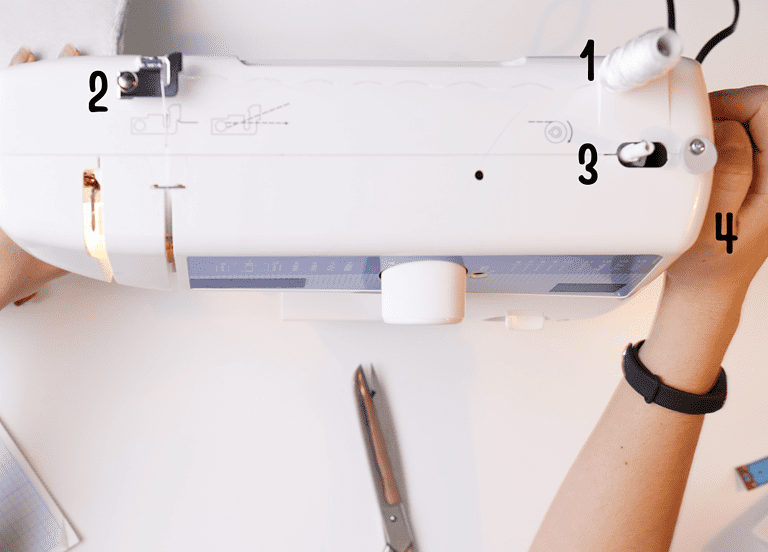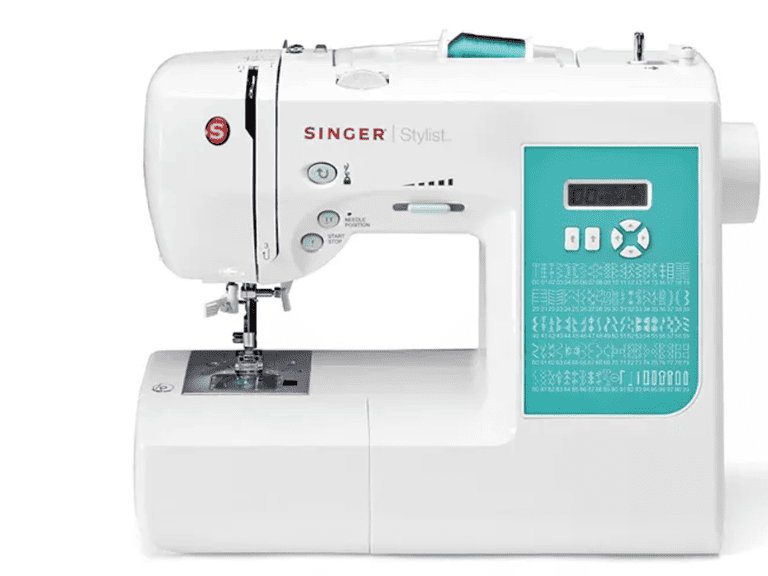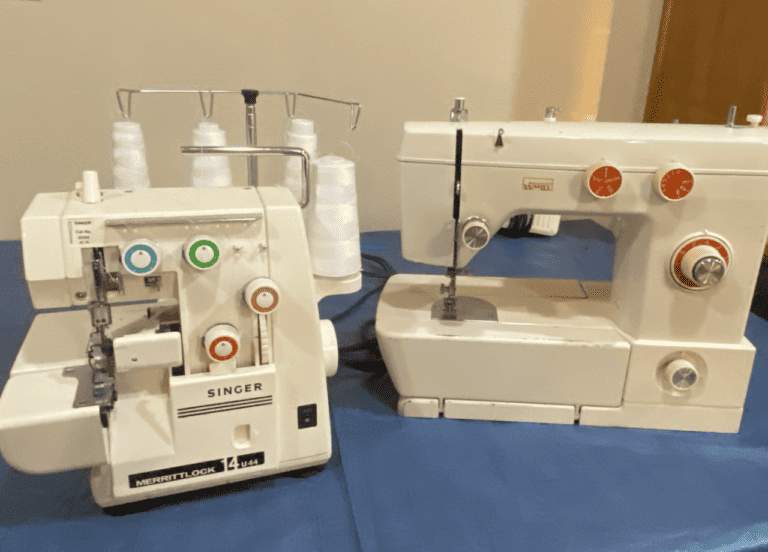Juki Sewing Machine Reviews: Good Machines For Sewers?
Today we are diving into Juki Sewing Machine Reviews. When you’re venturing into the world of sewing, the multitude of machine choices can be overwhelming.
Among them, Juki sewing machines stand out as reliable workhorses. Think of them as the trusty companion for your sewing adventures, no matter if you’re patching up a pair of jeans or crafting a quilt.
Juki, a seasoned sewing machine manufacturer, has built a reputation for durable and efficient machines that cater to both beginners and professional seamstresses.
Diving into the lineup of Juki machines, you’ll notice that they’re designed to offer a smooth sewing experience. They’re packed with features and settings that aim to enhance your stitching efficiency.
Addiontally, it’s not just about power and speed with Juki – precision plays a big role as well. Their machines are known for delivering consistent stitches, which is crucial when you want your projects to look their best.
It’s no surprise that Juki’s following ranges from hobbyists to high-volume textile producers.
Before you decide on your next, or perhaps first, sewing machine, reviews of Juki models can be invaluable. They help you understand the nuances of each machine and what you can expect in terms of performance and ease of use.
You might be looking for something compact and user-friendly or maybe a machine capable of handling thicker materials with ease.
Whichever the case, seeing how various Juki models stack up against your sewing needs could lead you to your ideal match.
Juki Sewing Machine Reviews
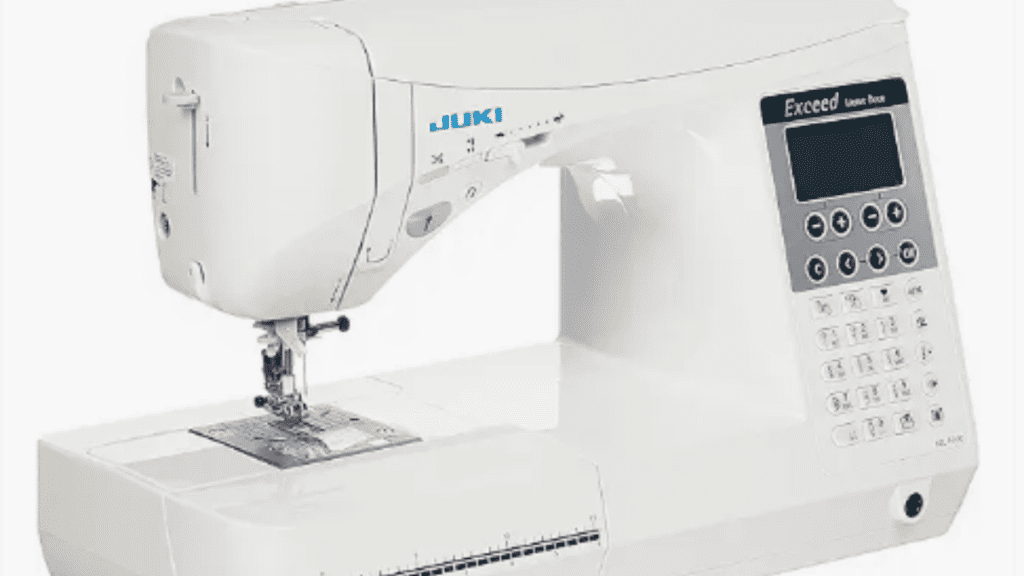
Juki Corporation has established itself as a leading name in sewing technolog making them a great machine, offering a variety of machines that cater to both professional and home machine use alike.
Juki Sewing Machines
Juki began as a manufacturer of industrial sewing machines in Tokyo back in 1945. Over time, it has expanded its reach globally and now provides an array of machines, including those designed for household use.
Juki Sewing Machines Models
There are several types of Juki machines to choose from, depending on your sewing needs:
- Industrial Machines: Juki’s strong reputation in the market is largely based on their durable and efficient industrial sewing machines, designed for high-volume, professional sewing tasks.
- Household Sewing Machines: For your home projects, Juki provides models like the Juki HZL-LB and Juki HZL-F, which are more compact and user-friendly.
- Quilting Machines: The Juki TL-2010Q is a single-needle, lockstitch, portable sewing machine, which is prized among quilters for its precision.
- Computerized Sewing Machines: If you’re into high-tech sewing, Juki’s computerized models offer advanced features that save time and expand your creativity.
- Embroidery Machines: Although Juki is more recognized for sewing products, they also offer machines that accommodate embroidery functions.
Juki’s Place in the Market
Juki holds a significant share in the sewing machine market, with their products renowned for reliability and innovation. Both their industrial and home machines are highly regarded by users around the world. Whether you’re looking to perform intricate quilting or handle heavy-duty industrial sewing tasks, Juki likely has a machine that fits your specifications.
Juki Sewing Machines
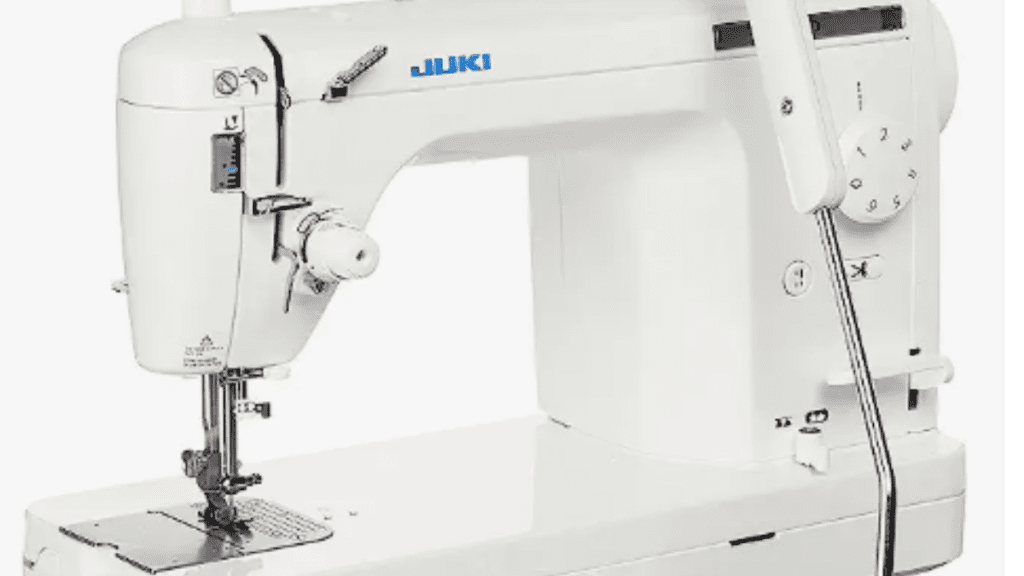
Check Prices: Juki Sewing Machines
When searching for the best Juki sewing machine, it’s essential to review various models, features tailored for different skill levels, and understand the pricing and availability.
Comparing Models
When comparing Juki models, it’s advisable to start by considering the tasks you’ll be using the machine for. If you’re looking for a machine that’s adept at both quilting and general sewing, the Juki HZL-F600 might be a great choice as it’s often considered one of the best sewing machines due to its versatility and range of features. For heavy-duty work, the Juki TL-2010Q, a semi-industrial model, offers robust performance and durability. Here’s a basic comparison:
| Features | Juki HZL-F600 | Juki TL-2010Q |
|---|---|---|
| Type | Computerized | Semi-Industrial |
| Stitch Options | Wide Variety | Basic but High-Speed |
| Suitability | Home Sewing & Quilting | Heavy Fabrics & Volume Sewing |
Features for Home Sewers versus Professionals
If you’re a home sewer, a good first sewing machine might be the Juki HZL-LB5100, which is user-friendly and has basic features to handle most projects. It’s versatile enough for your needs without being overwhelming. Machine highlights include:
- Ease of Use: Simple interface with beginner-friendly features.
- Stitch Options: Offers a variety of stitches for flexibility.
For professionals, the Juki DDL-8700 is a workhorse best suited for continuous hours of sewing with minimal vibration and noise. Key features for professionals include:
- Speed: Capable of up to 5,500 stitches per minute.
- Durability: Built to endure demanding projects and usage.
Juki Sewing Machine Dealers
Pricing can vary based on model and where you shop. For an entry-level Juki, prices might start around $200, while high-end professional machines can exceed $1,000. It’s often best to purchase from an authorized local dealer to ensure warranty coverage and local support. Online retailers like Amazon also offer competitive pricing, but make sure you’re buying from a reputable source to avoid counterfeit machines. Here’s a quick pricing guide:
- Entry-Level: Around $200 – $500.
- Mid-Range: Around $600 – $1,000.
- Professional: $1,000 and up.
Remember to check for deals or bundled accessories that add value to your purchase.
Sewing Machines+Reviews
We have taken the time to ask our amazing community their favorite things about the sewing machines they use. We have done a review for all the most seen sewing machines currently on the market to help you make a great decision. If you are thinking of a particular machine, head over and check out the review and see if that is the best machine for you:
Key Features and Innovations
When looking for a Juki sewing machine, you’ll come across some standout features and innovations that enhance your sewing experience. These include convenience-enhancing automatic functions, a diverse range of stitch options, and the durability that’ll keep your machine running smoothly for years.
Automatic Functions
Juki sewing machines often feature automatic thread cutters and automatic needle threaders to save you time and alleviate some of the more tedious tasks. The bobbin winder makes setting up your sewing session a breeze. The touch screen on many models allows you to quickly adjust settings without fiddling with dials or buttons.
- Automatic Thread Cutter: Cuts threads with the press of a button.
- Automatic Needle Threading: Easy threading to get you started faster.
- Bobbin Winder: Efficiently prepares your bobbins for use.
- Touch Screen: Intuitively adjust your machine’s settings.
Stitch Quality and Versatility
With a Juki, you’re getting a machine that delivers precise and consistent stitches. The stitch regulator ensures uniform stitch length, crucial for both aesthetics and construction quality. You have a plethora of stitch options, including the zig zag stitch, and the ability to modify stitch length and customizable stitch settings.
- Stitch Regulator: Keeps stitches even and perfect.
- Zig Zag Stitch: Adds versatility for different projects.
- Stitch Options: A variety of stitches for any task.
- Customizable Stitch Settings: Adjust settings for the perfect stitch, every time.
Machine Durability and Maintenance
Juki’s reputation for durability comes from high-quality components like servo motors and sturdy needle plates. Maintenance is made easier with features like the variable speed control slider and feed dog adjustments, ensuring your machine stays in top condition.
- Servo Motors: Give you the power you need with less noise and wear.
- Needle Plate: Built tough to withstand extensive use.
- Variable Speed Control Slider: Offers control over sewing speed for different projects.
- Feed Dog: Adjustable to ensure smooth fabric feed under the needle.
Juki Sewing Machine Operation
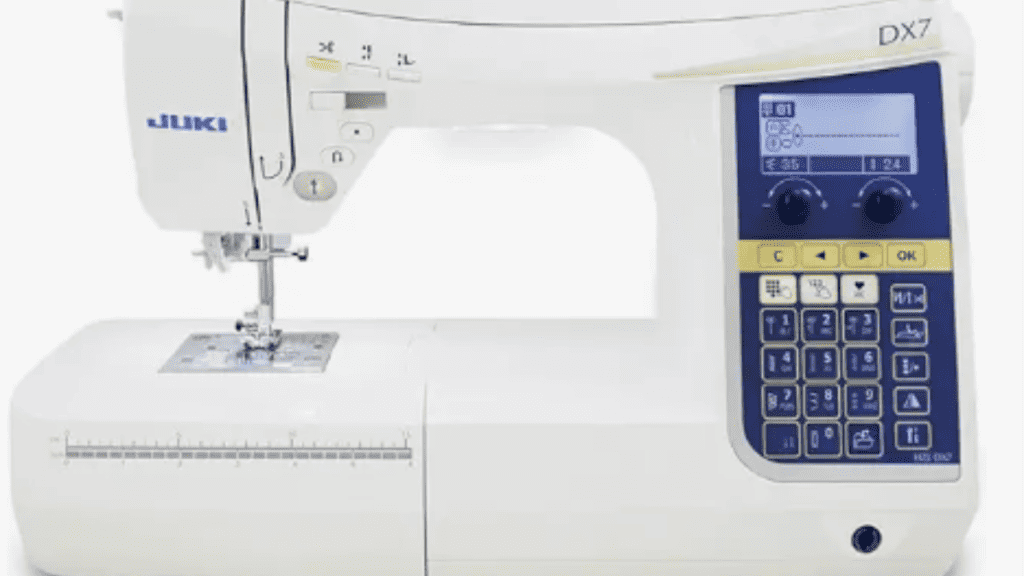
When you’re ready to start sewing with your Juki machine, the process can be straightforward and enjoyable, especially with a quick guide on how to operate it and address any hiccups.
Getting Started
First, plug in your machine and position your foot pedal where it’s comfortable for your foot. This pedal controls the sewing speed, so you’ll want it easily accessible. Open up the instruction manual to get familiar with your machine’s specific model features.
Select your stitch patterns by following the instructions, often just a turn of a dial or a press of a button. For installation of presser feet, which hold your fabric steady, you typically just snap or lock them into place on your machine.
You’ll also need to adjust your tension settings — a crucial step for ensuring your stitches are neither too loose nor too tight. This can usually be done via a dial or a touchscreen, depending on your Juki model. Remember to test your settings on a scrap piece of fabric before diving into your project.
As for the presser foot pressure, it’s often adjusted according to the thickness of the fabric you’re using. Ensure it’s set right to prevent the fabric from puckering or stretching.
Troubleshooting Common Issues
If you encounter a problem, don’t worry. Most common issues have simple fixes.
- Skipped Stitches: Re-thread your machine to make sure the thread is properly seated in the tension discs. Also, check if the needle is inserted correctly and if it’s the right type for your fabric.
- Thread Bunching: This might be a tension problem. Dial back the tension if it’s too high. Remember, re-threading both the top thread and the bobbin can often resolve this.
- Machine Not Sewing: Ensure the presser foot is down; if it’s up, the machine will not sew.
- Noisy Operation: Confirm that the machine is properly oiled as per the instruction manual. Replace any bent or blunt needles, as they can cause a racket when sewing.
Keep your instruction manual handy because it will have machine-specific guides for these issues and other troubleshooting tips. Remember to regularly clean and maintain your Juki to prevent many common problems.
Quilting and Specialty Sewing with Juki

Juki sewing machines are well-known for their durability and precision, making them a solid choice for your quilting and specialty sewing needs. Whether you’re working with big quilts or navigating thick materials, you’ll find a machine tailored to your projects.
Ideal Machines for Quilting
When it comes to quilting, having a machine that can handle the specifics of free motion quilting and straight stitch is crucial.
For seamless large quilts, Juki TL-2000Qi is your go-to. It’s a high-performance, heavy-duty machine that offers a large work area, essential for maneuvering large quilts.
The Juki HZL-F series is another contender, poised for your straight line quilting needs, providing precision and variety in stitches for those intricate designs.
| Machine Model | Type | Suitable For |
|---|---|---|
| Juki TL-2000Qi | Straight Stitch Quilting Machine | Large quilts, Free motion quilting, Heavy-duty sewing |
| Juki HZL-F series | Computerized Sewing Machine | Precision stitching, Design variety |
Accessories for Enhanced Experience
To enhance your experience, accessorize. A walking foot helps in evenly feeding layers of fabrics, which is essential for quilting straight or decorative stitches on thick fabrics. For free motion quilting, an open toe foot allows better visibility as you create intricate designs. Juki offers a range of feet and attachments that cater to your specialty sewing needs.
- Walking foot – For straight and decorative stitches.
- Open toe foot – For better visibility during free motion quilting.
Navigating Thick Materials
If you’re regularly sewing thick materials, power and build quality matter. Juki’s longarm sewing machines, like the Juki TL series, show off robust construction and can sail through multiple layers with ease. With a large work area, these machines give you the freedom to handle big and thick quilts without a struggle.
- Juki TL series – Heavy-duty construction, suitable for handling thick fabrics and big quilts with ease.
User Experience and Community
When it comes to Juki sewing machines, user experiences often highlight the ease of use and the dependable stitch quality. Community support can be a huge boon, helping you uncover the full potential of your machine.
Customer Reviews and Testimonials
Customer reviews frequently mention Juki’s ease of operation, making them some of the easiest machines to get the hang of. Many users express that a perfect stitch is almost guaranteed, with remarks pointing out how Juki is a high-quality choice even for those just stepping into the sewing world. For instance, an entry-level Juki is often recommended as a good option if you’re starting a sewing business or looking for the best things in a second machine.
| Feature | User Feedback |
|---|---|
| Stitch Quality | “Incredibly consistent, no skipped stitches.” |
| Machine Options | “Variety of stitches, easy to switch between them.” |
| Durability | “Feels like it can handle heavy fabrics with ease.” |
| Bobbin Threading | “Effortless bobbin threading system.” |
Whether you are considering the leap into a Juki for personal projects or professional work, tapping into the user community can provide a wealth of knowledge and support to bolster your sewing journey.
Maintaining Your Juki Sewing Machine
Proper maintenance ensures your Juki sewing machine, whether it’s new or has been your main machine for a while, remains in top-notch condition. It’s worth investing a little time to look after your machine so that it’s always ready for a lot of practice or those long projects.
Routine Care
Your Juki sewing machine needs regular cleaning and oiling. Remember, dust and fabric lint can accumulate quickly, especially if your sewing room is bustling with activity.
- Cleaning: After each project, use a soft brush to clean out the bobbin case. Gently remove any lint from the feed dogs and beneath the needle plate.
- Oiling: Check your Juki’s manual for specific oiling instructions. A drop of sewing machine oil on the hook race (under the bobbin case) after every few projects keeps the parts moving smoothly.
If your machine has an extension table, make sure to remove it periodically and clean the area underneath. It’s easy for small bits of thread and fabric to hide there.
Servicing and Repairs
Even with diligent care, your machine could need servicing to tackle wear and tear that’s beyond your scope.
- Professional Servicing: Aim for a professional service check at least once a year. This will involve a deep clean, tension adjustments, and checking for any worn parts that may need replacement.
- DIY Troubleshooting: If your machine starts acting up—a strange noise or a stitching problem—refer to your manual first. If it’s a minor issue, such as thread tension or a needle problem, you might be able to fix it without a trip to the repair shop.
Remember, a well-maintained Juki sewing machine is a better, more reliable machine that can give you years of sewing pleasure with just a little time dedicated to care.
Additional Resources and Support
When you invest in a Juki sewing machine, you have access to a wide range of resources to help you get the most out of your equipment. From detailed instructional guides to dedicated customer service and a wealth of advanced techniques, you’ll find everything you need for your sewing projects.
Instructional Guides
- New Machine Setup: Each new Juki machine comes with an instruction manual outlining setup procedures, basic operations, and maintenance. These manuals are critical for getting started and can be found either in the box or on the Juki Corporation’s website for download.
- Project Assistance: For various sewing projects, you can often find online tutorials that are machine-specific. These guides can range from quick-start videos to comprehensive step-by-step PDFs, designed to help you learn at your own pace.
Customer Service and Warranty Info
- Contact Details: Be sure to save Juki’s contact information. It’s available on their official website under the ‘Support’ or ‘Contact Us’ sections. In case you run into any issues with your machine, they’re just a call or email away.
- Warranty Coverage:
- New Machine: The warranty details for your new machine will be included in your user manual. It typically covers parts and labor for a set period.
- Second Machine: If you’re purchasing a second-hand Juki, inquire about the transferability of the warranty.
Advanced Techniques and Tips
- Expert Guides: Look for Juki’s own selection of advanced guides to enhance your skills. These are perfect for when you’re ready to move beyond the basics.
- Community Forums: Engage with the Juki sewing community through forums and social media groups. Here, you can share tips, tricks, and get advice on more complex projects.
Fabric Giveaway
Enter our monthly fabric giveaway. Simply complete the tasks daily and you will be entered into the drawing. Winner will be randomly drawn on the first day of the month and notified via email
